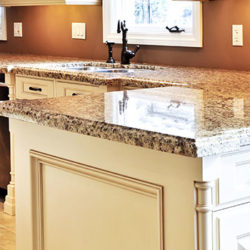A well-executed makeover can improve your client experience, sales, and brand image. However, upgrading your store can be complex and difficult, necessitating meticulous planning, financing, and implementation.
This guide will help you navigate the various components of store remodeling, such as determining your goals and needs, investigating your options, and gathering the ideal retail store contractors to complete the project.
Whether you want to make aesthetic modifications or increase your store space, this guide will provide you with the necessary information and recommendations to make your business redesign a success.
Understand your needs and goals for the project
The first step in your store makeover is to determine your unique goals and objectives for the restoration project, as well as assess your current needs and challenges. This will help you prioritize your alternatives, allocate your resources, and track your results.
To accomplish this, critically examine your store’s layout, consumer comments, and store statistics.
Based on your analysis, you can determine your store’s most pressing needs and issues, as well as the most relevant and achievable goals and objectives for your retail makeover. You can also utilize a SWOT analysis tool to help you organize and visualize your results.
- After you’ve done your SWOT analysis, you may utilize it to inform your decision-making and action planning.These questions can assist identify your unique aims for upgrading your store, such as:
Improve the store’s design and functionality.
- Maintain competitiveness and attract new customers.
- Address the changing demands and preferences of existing clients.
- Expand the store’s space and introduce new products or services.
- Improve operational efficiency and cut expenditures.
Whatever your motivation, it’s critical to have a clear vision of what you want to accomplish with your store redesign and how it will fit into your overall business goals and strategy.
Explore your renovation options
You can select the approach(es) required to improve your store layout, design, equipment, and services based on your goals, needs, and budget.
Starting with the simple options that yield immediate and observable results, you can then proceed to the medium options that yield more substantial and long-lasting benefits, and finally, you can think about the difficult options that can yield the most significant and transformative results.
It’s crucial to be realistic and adaptable when choosing options, and to modify them in accordance with your financial and schedule constraints.
Additionally, you should think about how each option will affect your store operations, customer satisfaction, and environmental sustainability.
Have a budget
Your budget for store remodels will be determined by the type and extent of your renovation project, as well as the quality and quantity of materials and labor that you need.
Here are some suggestions to help you manage and finance your store remodel:
Estimate the costs: Research and evaluate the costs of supplies, equipment, and labor for your retail redesign. Online tools, catalogs, and estimates from vendors and contractors can help you get a sense of market prices.
Set a budget: Create a realistic and fair budget for your store refurbishment. Consider your objectives and needs, your options and priorities, and the expected outcomes and benefits—as well as contingency money for unexpected expenses or delays.
Consider your financing options: Find out how you can finance your retail refurbishment. A financing calculator or comparison tool can assist you in determining the most appropriate financing choice for your store refurbishment.
Calculate the ROI: Determine your retail remodel’s return on investment (ROI). Estimate the amount of revenue, profit, or savings you can make from it. Also, calculate how long it will take to recoup your expenses and break even.
Put together the right team
If you haven’t already started assembling a team, now is the moment to hire experts who can help you bring your vision to life. Depending on the extent and complexity of your project, you may require the assistance of numerous professionals:
Designer: A designer is responsible for defining the visual and functional components of your retail makeover. They can assist you in developing a complete plan and selecting the most appropriate layout, design, color scheme, lighting, and materials for your store.
They may also help you create a mood board, floor plan, 3D model, or visualization for your proposed business redesign.
Contractor: A contractor manages and coordinates the construction and installation phases of your retail refurbishment. They can help you secure the appropriate licenses, source supplies, and purchase equipment for your project. They also manage and communicate with subcontractors including electricians, plumbers, carpenters, and painters.
Engineer: An engineer verifies that your store makeover is structurally sound and safe. They assess your store’s load-bearing capability, fire resistance, and energy efficiency while also ensuring that your project complies with building norms, regulations, and standards.
Manufacturer: A manufacturer plays an important role in making your creative ideas a reality. They manufacture the decor and fittings according to the design parameters and guarantee that they meet your store’s aesthetic and functional needs.
Installers: Installers are in charge of installing the fabricated decor and fixtures in your business, whether through the general contractor or a third-party installation service. They verify that the installation is completed accurately and safely, according to the design plan.
Building the proper professional team can have a big impact on the quality, timeliness, and cost of your shop redesign. Choosing specialists with suitable experience, expertise, and a positive reputation is critical.
Consider their style, demeanor, and communication abilities to establish a successful working relationship.
To hire the right team for your retail remodel DC project you need to research and compare the portfolios, evaluations, and references of the professionals you’re considering for your project. Online platforms, directories, and referrals can all help you identify and contact suitable applicants.
You should conduct interviews with your candidates and ask relevant questions about their qualifications, experience, and approach to your project. Evaluate their abilities, knowledge, and inventiveness, as well as their accessibility, dependability, and compatibility. Request a proposal, contract, or quotation for your project.
Finally, discuss and agree on the project’s terms and conditions with the pros you’ve hired. This comprises the scope, timetable, budget, payment plan, warranty, and dispute resolution procedures. Once you are done, review and sign a written agreement outlining the project’s details and expectations.



